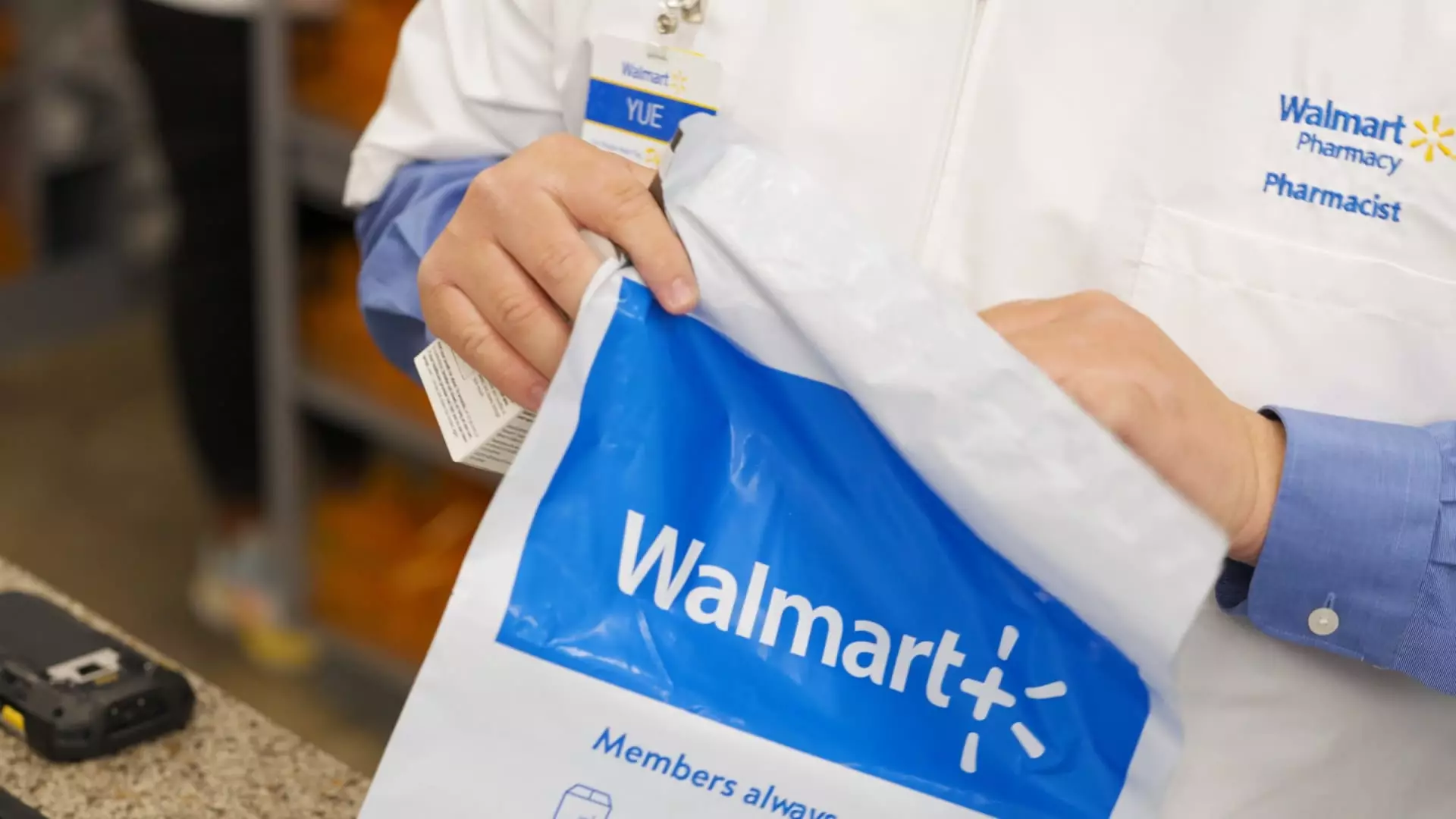In an ever-challenging retail environment marked by changing consumer preferences and stiff competition, Walmart has stepped up to diversify its offerings and provide innovative services that reshape customer experiences. As traditional pharmacy chains like CVS and Walgreens grapple with store closures and plummeting stock prices, Walmart has announced a new prescription delivery service that seeks to dominate the market with convenience and cost-effectiveness. This strategic move signifies a departure from the conventional pharmacy model and positions Walmart as a formidable player in the health and wellness sector.
The retail giant recently introduced its prescription delivery service across six states — Arkansas, Missouri, New York, Nevada, South Carolina, and Wisconsin — with aspirations to expand to 49 states by the end of January. However, residents of North Dakota will not have access to this service due to prevailing state regulations. Walmart’s delivery initiative not only includes prescriptions but allows customers to bundle their medication with everyday items like tissues, chicken noodle soup, or blankets during the same transaction. This integration of pharmacy with general retail illustrates Walmart’s commitment to enhancing customer convenience, responding to the evolving landscape where consumers prefer one-stop shopping experiences.
Impact on Drugstore Chains
The emergence of Walmart’s delivery service adds to the competitive pressures facing CVS and Walgreens. These traditional drugstore retail giants are witnessing shifts in consumer behavior, leading to a decline in foot traffic and profitability. Although CVS and Walgreens provide their own delivery services, including same-day and one-day options, the question remains whether they can effectively compete with Walmart’s extensive reach and integrated delivery model. The challenges are further compounded by fluctuating reimbursement rates for prescription drugs, inflation, and the encroachment of players like Amazon and big-box retailers, all of which are grinding profit margins down at pharmacy counters.
Walmart’s Chief E-commerce Officer, Tom Ward, emphasized that customer demand drove the inclusion of pharmacy deliveries, highlighting this service as a top consumer request. The delivery process not only promises convenience but also assures safety with tamper-evident packaging and real-time tracking provided through Walmart’s app and website. This focus on customer-centricity may appeal to a demographic increasingly reliant on digital solutions for everyday logistics.
Financial Dynamics and Market Share Shifts
Despite the evident advantages of Walmart’s innovative approach, the impact on market share remains to be fully realized. According to recent statistics, CVS tops the U.S. pharmacy market with over 25% share, followed by Walgreens at nearly 15%, while Walmart holds a modest 5%. The current financial climate is demanding painful adjustments from CVS and Walgreens, with both chains forced to reassess their strategies amid falling stock values and profit margins. CVS recently underwent a leadership change following investor pressure and announced significant cost-cutting initiatives, alongside plans to close 900 locations, underscoring the urgency of their situation.
Furthermore, Walgreens has flagged plans to shutter roughly 1,200 stores as part of a broader strategy to mitigate losses. This crisis faced by traditional pharmacies is indicative of a broader trend wherein consumer preferences shift towards more versatile retailers like Walmart, which can operate efficiently across various product categories.
Walmart’s Broader Vision for Health and Wellness
Walmart’s advancement in the health and wellness sector is not limited to just prescription delivery; the company aspires to enter the realm of healthcare services through low-cost clinics that offer a range of medical services, including dental appointments and therapy sessions. With nearly 60% of Walmart’s U.S. revenue stemming from grocery sales, health and wellness make up an expanding category, contributing approximately 12% to their annual income. This diversification not only enhances Walmart’s market position but reflects the evolving retail landscape where convenience and comprehensive service offerings are paramount.
Walmart’s commitment to innovating within the prescription delivery space and integrating health services aligns with broader retail and consumer trends. As consumers seek more streamlined solutions for their healthcare needs, Walmart’s approach may not only gain traction but could also redefine the way pharmacy services are delivered. The fate of CVS and Walgreens may increasingly hinge on their ability to respond to these competitive pressures and adapt to changing consumer behaviors. Whether Walmart can significantly erode the market shares of these established pharmaceutical chains will become evident in the upcoming months as consumers embrace a new paradigm in retail pharmacy. In the meantime, consumers can look forward to the convenience and savings offered through Walmart’s evolving service landscape.


Leave a Reply